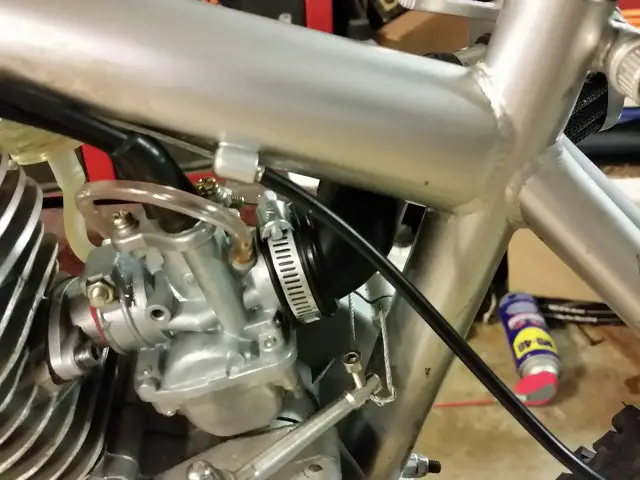It has to be sealed and free of air leaks or it will not tune. There is no way to properly tune anything that's leaking air.
The only choices here are to either use the CNS intake so you can remove the carb and get it back on without leaking or to RTV seal the void in the carb clamp area, you can still remove the carb but you'll be removing the carb and manifold together... As I mentioned before, this carb is Not for newbies or someone just starting out, It does work and it works well once tuned, but it takes some extra effort to get it there.
The CNS intake from Manic Mechanic solves this issue because it's a larger diameter to match the carb and it has the step down to engage the rubber seal in the carb. This intake is very short but it's got the right outside and inside diameter to let the carb mount without leaking. Here's a link to one of these intakes so you can see what I'm talking about, the price is pretty much the same wherever you get it, but it will save you a ton of frustration for sure...
http://www.pistonbikes.com/product-p/mmimcns.htm
In order to use this carb, I'd say to start with a #66 jet or even a #64 in your case to compensate for the altitude before installing it and see what it does, This particular carb takes the Dellorto 6mm jets and I think Pistonbikes also sells the jets for this one too....
That should get you really close to where you need to be, and the idle mixture adjustment is really nice for tuning in the low end, then the midrange can be dialed in by raising or lowering the needle which is accessed from the top of the carb... It can be a tedious job to get one of these to work right on a China Girl engine, but once it's right you'll really like it.





